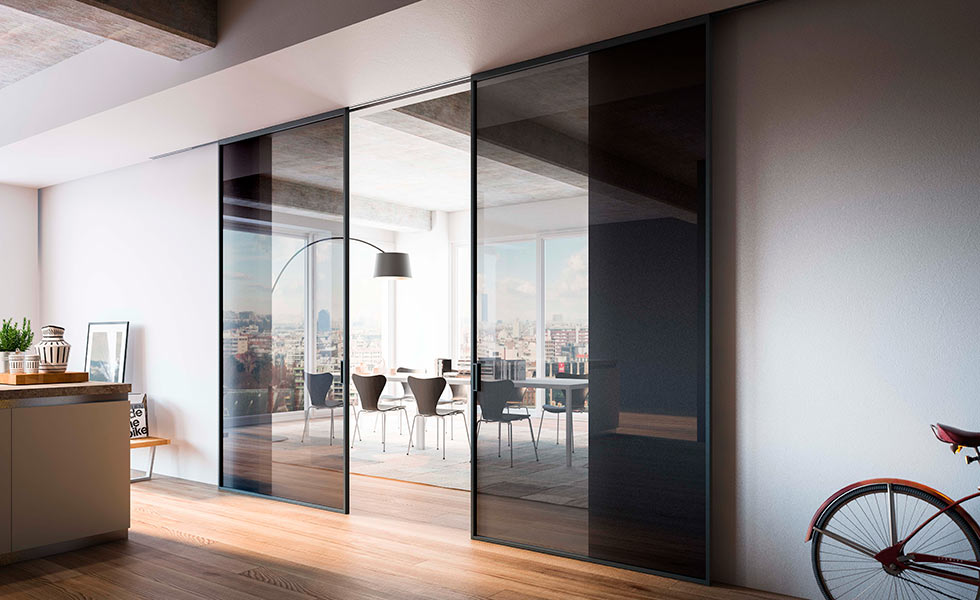
Content supplied by IQ Glass
Subdividing a home might make sense from a practical point of view, but adding solid walls and doors to a home can make it feel smaller and darker. IQ glass explain how to redesign your floorplan, without blocking natural light or the flow of the space.
Where might you use a sliding glass door?
Integrating internal sliding glass doors into the interior design of a home is increasing in popularity as a way to zone open plan spaces, creating what has become known as broken plan. This is where the home still has the feel and flow of an open plan home, but areas have clear and distinct purposes such as for eating, relaxing or working. This can be achieved by using differing floor levels or coverings, or you may want some physical barriers in place — especially where noise might be an issue.
This is where sliding glass doors come in, allowing you to open and close off spaces, without blocking light or views. They are commonly used between walk-in-wardrobes or as access to a bedroom or home office.
They can be made to any size, fitting your living spaces perfectly, without using the space needed for a standard door. What’s more, glass can allow as much or as little privacy as you need. If you want to work in peace, but still keep an eye on the kids then glass is perfect. If however you want the light, but also the privacy, a frosted or electro chromic glass can be used instead.
What design options are available?
It is easy to create a completely bespoke design with this style of door due to the range of framing and glazing options available. Although internal sliding doors are one of the most popular options, you can also have a beautifully designed pocket and pivot internal door.
Home Offices: Incorporating privacy glass into your sliding or pocket door is ideal for creating a private home office. This will allow natural light to pass through whilst providing the quiet you require from the rest of the house.
Bedrooms: Blinds can be integrated into your internal door design to provide even further privacy or to block out any unwanted lighting, perfect for bedrooms. Aluminium bars offer privacy as well as visual interest.
Living Spaces: Pocket doors are perfect for integrating into your interior design as they allow you to open up a passageway with no obstructions. Pivot doors are also a great choice to use between living spaces as there are many design options available. These doors can sit flush to your wall and with a matching door colour you can create a seamless design with no protruding frame.
Other design options are available for each style of door to allow you to create something bespoke to your home including the possibility of having two different glass finishes on either side of the door.
Will internal sliding doors minimise my living space?
Super slim framed internal doors can be configured in a way that they almost disappear when open. Installing these slim framed internal doors can actually maximise use of your living space by creating a separation between two rooms.
Combining glass with aluminium framing creates a lightweight product that can easily be opened and closed as well as being sturdy and long-lasting.
Join our newsletter
Get small space home decor ideas, celeb inspiration, DIY tips and more, straight to your inbox!